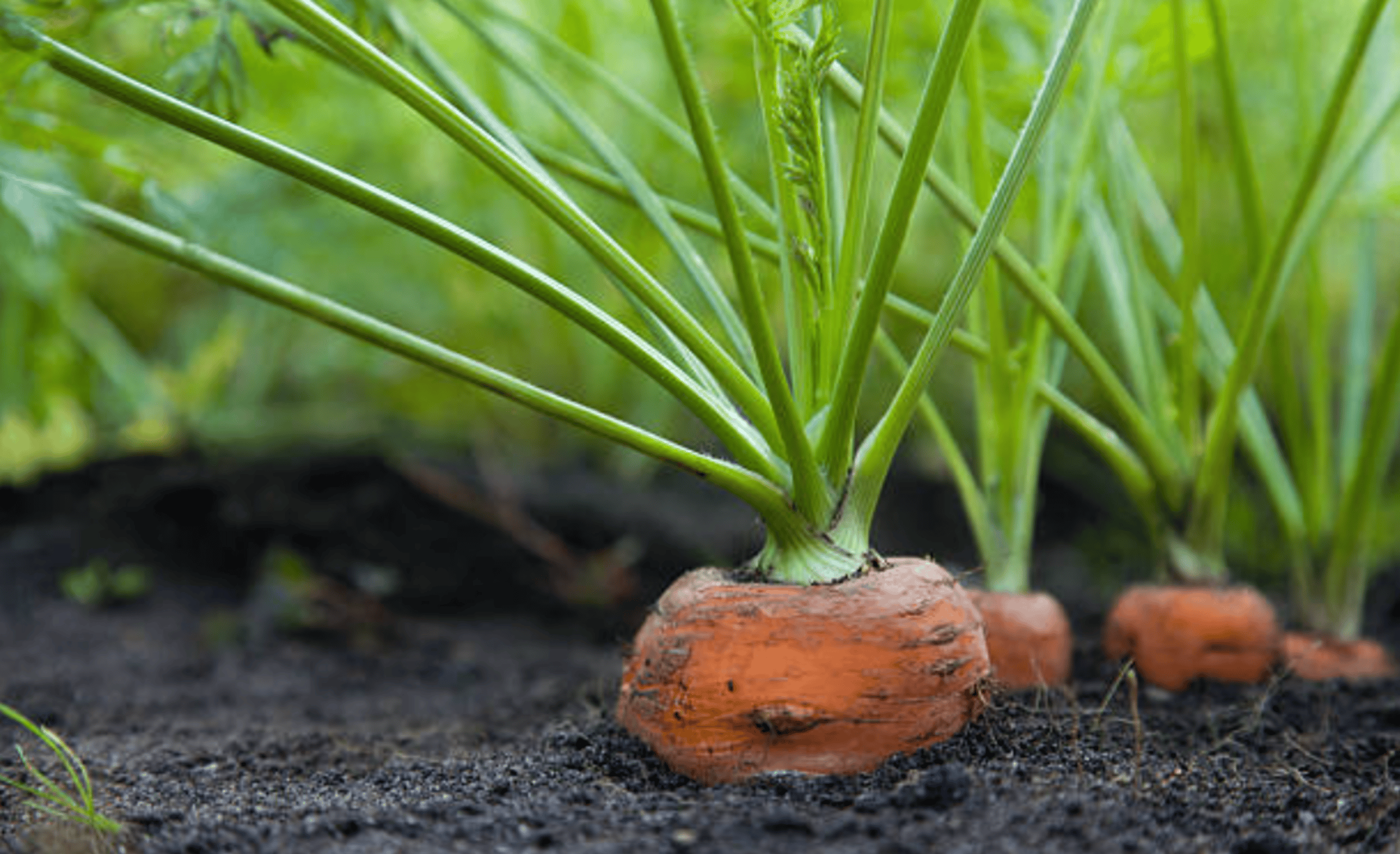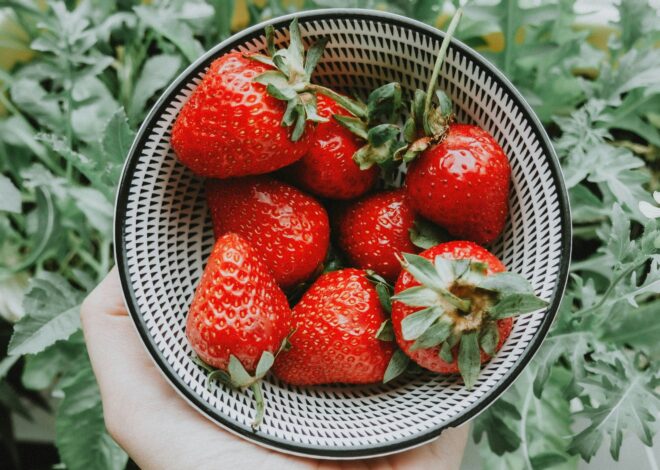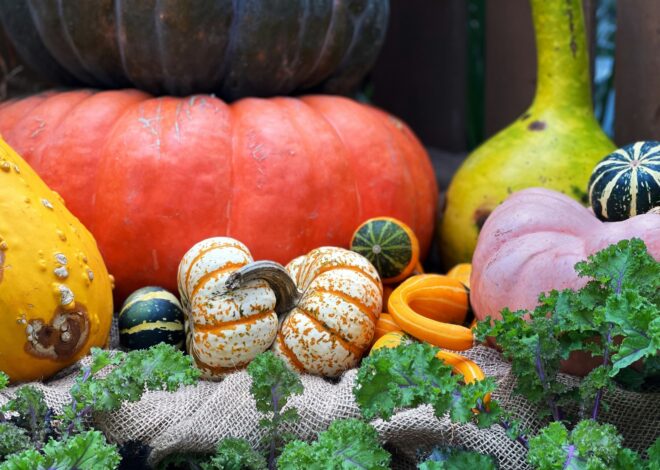
How To Grow Your Own Carrots
Welcome to our guide on how to grow carrots. Carrots are more than just a vibrant addition to your plate. These crunchy, colorful vegetables pack a punch of flavor and nutrition that can elevate any dish. Imagine pulling fresh, organic carrots straight from your garden, their earthy aroma filling the air as you wash them for dinner.
Growing your own carrots is not only rewarding but also surprisingly simple! Whether you’re an experienced gardener or just starting out, this guide will walk you through everything you need to know about cultivating these root veggies right in your backyard. Dive into the world of gardening with us and discover how easy it really is to grow your own carrots!
How To Grow Your Own Carrots
Growing your own carrots begins with selecting the right location. Carrots thrive in full sunlight, so choose a spot that receives at least six hours of direct sun each day. Next, focus on preparing the soil. Loose, sandy loam is ideal for growing straight and healthy carrots.
Mix in compost to enhance drainage and provide essential nutrients. When it comes time to plant, it’s crucial to sow seeds directly into the ground rather than starting them indoors. Simply create shallow furrows, drop seeds evenly along them, and cover lightly with soil.
As your seedlings emerge, thinning is vital to prevent overcrowding. This encourages stronger growth by giving each carrot room to develop its roots without competition. Regular watering will keep the soil moist but not soggy—a delicate balance for these root vegetables as they grow towards maturity!
Introduction to Carrots
Carrots are more than just a vibrant addition to your plate. They’re one of the most versatile vegetables you can grow in your garden. Rich in nutrients, these crunchy delights come packed with vitamins A, K, and B6. Their natural sweetness makes them a favorite among kids and adults alike.
With roots that can stretch deep into the soil, carrots offer various colors beyond the traditional orange—think purple, yellow, and even white! Each variety brings its own unique flavor profile. Growing them is a rewarding experience that connects you to nature.
From tiny seeds to fresh produce ready for harvest, watching their journey is truly magical. Whether used in salads or soups, homegrown carrots elevate any dish they touch.
Benefits of Growing Your Own Carrots
Growing your own carrots offers a multitude of benefits. For starters, there’s the unbeatable taste of freshly harvested produce. Homegrown carrots burst with flavor that you simply won’t find in store-bought varieties. Another advantage is the nutritional value.
Carrots are packed with vitamins and minerals, especially when consumed right after harvest. You can enjoy all these health benefits without worrying about pesticides or other chemicals often used in commercial farming. Cultivating your own garden also provides a wonderful opportunity to connect with nature. Watching your carrots grow from tiny seeds into edible delights can be incredibly rewarding.
Moreover, growing carrots can save you money over time. With minimal investment and effort, you’ll have a steady supply of this versatile vegetable for salads, soups, and snacks throughout the season. Plus, it’s an engaging activity perfect for families looking to spend quality time together outdoors.
Choosing the Right Location for Your Carrot Patch
Selecting the right location for your carrot patch is crucial for a successful harvest. Carrots thrive in full sun, so look for a spot that receives at least six hours of sunlight each day. The soil should be well-draining to prevent waterlogging. Carrots develop best in loose, sandy loam or light soil that allows their roots to grow deep and straight.
Check the pH level; carrots prefer slightly acidic to neutral conditions, around 6.0 to 7.0. Consider proximity to water sources too. Regular watering is essential during germination and growth phases without causing sogginess.
Avoid areas where you’ve previously planted other root vegetables, as this can lead to pest issues and nutrient depletion in the soil. Rotating crops helps maintain soil health while keeping pests at bay. Make sure your chosen site is easily accessible for maintenance tasks like weeding and harvesting.
Preparing the Soil for Planting
Preparing the soil is a crucial step in growing your own carrots. Start by choosing a well-draining area, as carrots prefer loose, sandy loam. This type of soil allows their roots to grow straight and freely. Next, clear away any debris or weeds from the patch.
They can compete for nutrients and hinder growth. Turning the soil helps aerate it and improves drainage. Incorporating organic matter like compost enriches the soil with essential nutrients. Aim for a pH level between 6.0 and 6.8; you may want to test this first.
Once mixed thoroughly, rake the surface smooth to create an even planting bed. A fine texture will encourage better seed-to-soil contact when you sow your carrot seeds later on.
With these steps completed, you’re set for successful carrot growth!
Steps to Planting Carrots:
A. Sowing Seeds
Sowing seeds is an exciting step in growing your own carrots. It’s where the magic begins. Start by choosing high-quality carrot seeds suited for your climate.
Prepare shallow furrows about ¼ inch deep in your soil. Space them at least a foot apart to allow for growth. Gently sprinkle the seeds along the furrow, aiming for even distribution.
Once you’ve sown the seeds, cover them lightly with soil and pat it down gently to eliminate air pockets. This helps improve contact between the seed and soil—essential for germination.
Water carefully using a fine spray or watering can to avoid disturbing the soil too much. Keep the area moist but not soggy as you wait for those little green shoots to emerge, which typically takes about two weeks depending on conditions. Enjoy this waiting period; it’s part of nurturing life!
B. Thinning Seedlings
Once your carrot seeds have germinated, you might notice that some seedlings are crowded together. Thinning is essential for their healthy growth. It allows the remaining carrots enough space to develop properly.
Start thinning when seedlings reach about two inches in height. Gently pull out the weaker plants, making sure not to disturb the roots of those you want to keep. Aim for a spacing of two to three inches between each carrot.
Timing is crucial; if you wait too long, you’ll risk damaging established roots and stunting growth. Thinning can feel tough at first because you’re removing potential harvests. However, it’s an important step towards achieving bigger and better carrots later on.
This process also improves air circulation and sunlight exposure for each plant, resulting in healthier crops overall. Embrace this stage as a vital part of nurturing your garden’s bounty!
C. Mulching and Watering
Mulching is an essential step in growing your own carrots. It helps retain moisture, suppress weeds, and maintain a consistent soil temperature. Organic materials like straw, grass clippings, or shredded leaves work wonders as mulch. Spread a layer about two to three inches thick around the seedlings once they are established.
Watering is equally important for healthy carrot growth. Carrots thrive in well-drained soil that remains consistently moist but not soggy. Water them deeply once or twice a week depending on the weather conditions. Early morning is the best time to water; it allows excess moisture to evaporate during the day.
Pay attention to signs of stress in your plants—like wilting leaves—which may indicate they need more water. Keeping an eye on both mulching and watering will help ensure you harvest sweet and crunchy carrots later on!
Caring for Carrots:
Caring for your carrots is essential to ensure a bountiful harvest.
A. Fertilizing
Fertilizing your carrots is essential for robust growth. Carrots thrive in nutrient-rich soil, so getting the balance right is key.
Start by mixing compost into the soil before planting. This organic matter improves texture and provides nutrients that will help young seedlings establish strong roots.
If you prefer synthetic fertilizers, choose one low in nitrogen. High nitrogen levels can result in lush greens but stunted root development. Look for a balanced fertilizer with equal parts of phosphorus and potassium to encourage healthy carrot growth.
As your carrots grow, side-dress with additional compost or a diluted liquid fertilizer every few weeks during their active growing season. Just be careful not to over-fertilize; too much can lead to forked or misshapen roots.
Monitor your plants closely after fertilizing to ensure they respond well without signs of stress or nutrient burn. Happy fertilizing!
B. Controlling Weeds and Pests
Keeping your carrot patch free from weeds and pests is essential for a successful harvest. Weeds compete with your carrots for nutrients and water, so regular maintenance is key. Hand-pulling weeds can be effective, especially when they’re small. Just be cautious not to disturb the carrot roots.
Mulching around your plants serves a dual purpose. It suppresses weed growth while retaining moisture in the soil. Organic materials like straw or grass clippings work well as mulch.
Pests such as aphids or root maggots can cause damage if left unchecked. Regularly inspect your plants for signs of infestation. Introduce beneficial insects like ladybugs to help control these unwelcome guests naturally.
If you encounter severe issues, consider using organic insecticidal soap or neem oil to manage pest populations without harming beneficial species in your garden. Stay vigilant and proactive; a healthy carrot patch thrives on attention and care!
C. Harvesting and Storing Carrots
Harvesting carrots is an exciting moment for any gardener. It’s like unearthing a hidden treasure in your own backyard. Wait until the roots have reached about 1 inch in diameter, usually around 70 to 80 days after sowing.
Use a garden fork or spade to gently loosen the soil around each carrot. Pull them out carefully, taking care not to break the tops off. If you’ve planted them too close together, you may need to wiggle more vigorously.
Once harvested, brush off excess dirt but avoid washing them right away; this helps prevent spoilage. Store your fresh carrots in the refrigerator inside a plastic bag with holes for ventilation or submerged in water.
For long-term storage, consider freezing or canning your carrots. Blanch them first before freezing to preserve flavor and texture—perfect for enjoying those homegrown delights all year round!
Delicious Recipes Using Homegrown Carrots
Homegrown carrots bring a sweet crunch to every dish. One simple way to enjoy them is by roasting. Toss sliced carrots with olive oil, salt, and your favorite herbs before baking until tender. For a refreshing twist, shred raw carrots into a vibrant salad.
Mix with citrus segments and a light vinaigrette for a bright side dish that pops on any plate. Carrot soup is another fantastic option. Blend cooked carrots with ginger and vegetable broth for a creamy delight that’s perfect for chilly evenings.
Don’t forget about baked goods! Adding grated carrots to muffins or cakes elevates both flavor and moisture while adding natural sweetness. With so many options, homegrown carrots can elevate everyday meals into something special without much effort. Each bite carries the taste of your garden’s hard work.
Troubleshooting Common Issues in Growing Carrots
Growing carrots can be a rewarding experience, but sometimes things don’t go as planned. One common issue is poor germination. If your seeds are not sprouting, check the soil temperature; carrots prefer cool conditions between 55°F and 75°F.
Another problem might be stunted growth or misshapen roots. This often results from compacted soil or overcrowding in the garden bed. Make sure to loosen the soil before planting and thin out seedlings early to give each carrot room to grow.
Pests like carrot flies can also pose threats. Using row covers during peak seasons helps protect your crop while still allowing sunlight and moisture through.
If you notice green tops on your carrots, it’s a sign they may be exposed too much sun due to insufficient mulching. A layer of mulch not only retains moisture but also keeps those sweet roots shaded and healthy throughout their growing season.
Conclusion: The Satisfaction of Growing Your Own Carrots
Growing your own carrots can be an incredibly rewarding experience. There’s something special about pulling a fresh, vibrant carrot from the earth that you nurtured yourself. The satisfaction of knowing you cultivated your food adds a unique joy to mealtime.
Imagine crunching into a sweet, tender carrot that bursts with flavor—far superior to anything found in a grocery store. Not only do homegrown carrots taste better, but they also provide numerous health benefits packed with vitamins and minerals. When you grow your own carrots, you’re participating in sustainable practices while gaining valuable gardening skills.
It fosters patience and mindfulness as you watch them develop over time. Whether it’s for salads, stews, or simply snacking straight from the garden, the versatility of homegrown carrots is endless. Each bite is not just delicious; it’s also infused with love and care you’ve invested throughout their growth journey.
So grab those seeds and start planting! Enjoy every step of cultivating this wonderful vegetable because nothing compares to the pride of enjoying produce grown by your hands.



